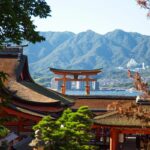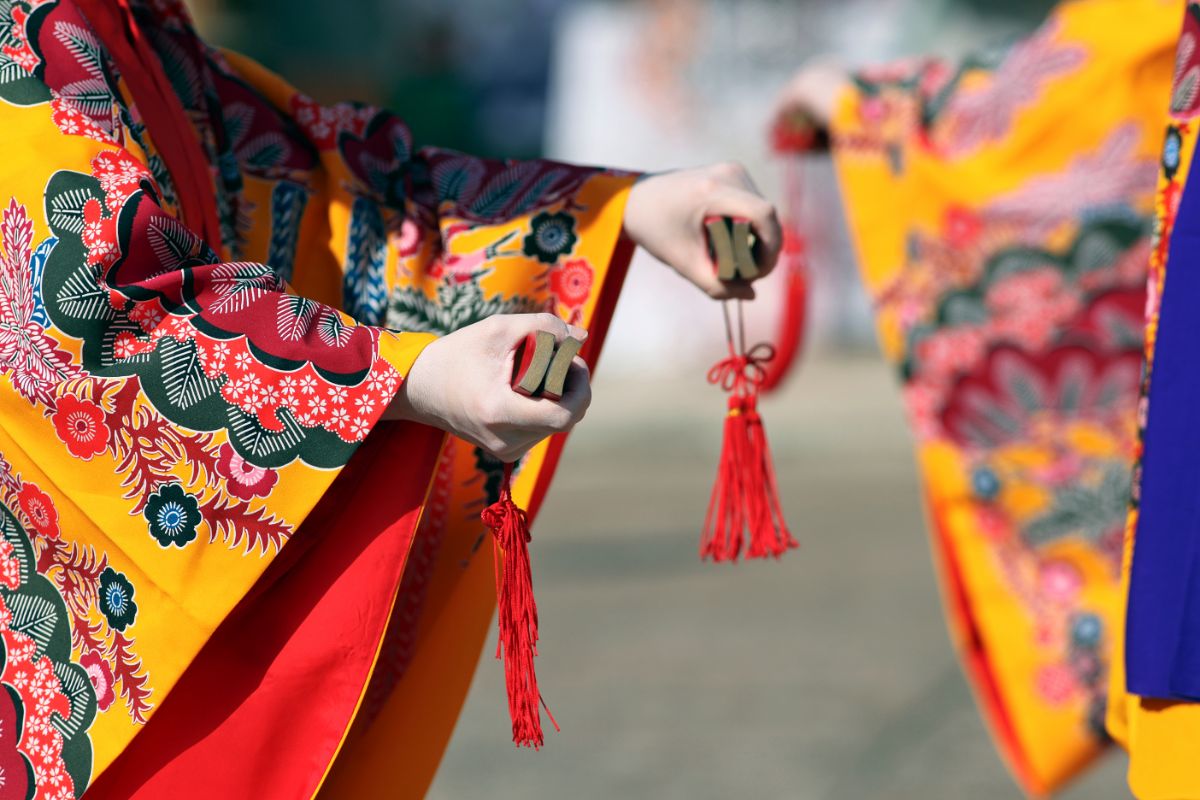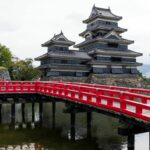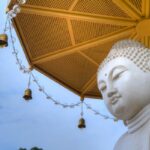Shintoism, or Shinto, is one of Japan’s oldest religions. Shintoism dates back to the Yayoi period (200BCE to 250CE).
While Shintoism doesn’t have an official founder, there is a large variety of beliefs and traditions that are celebrated throughout the year.
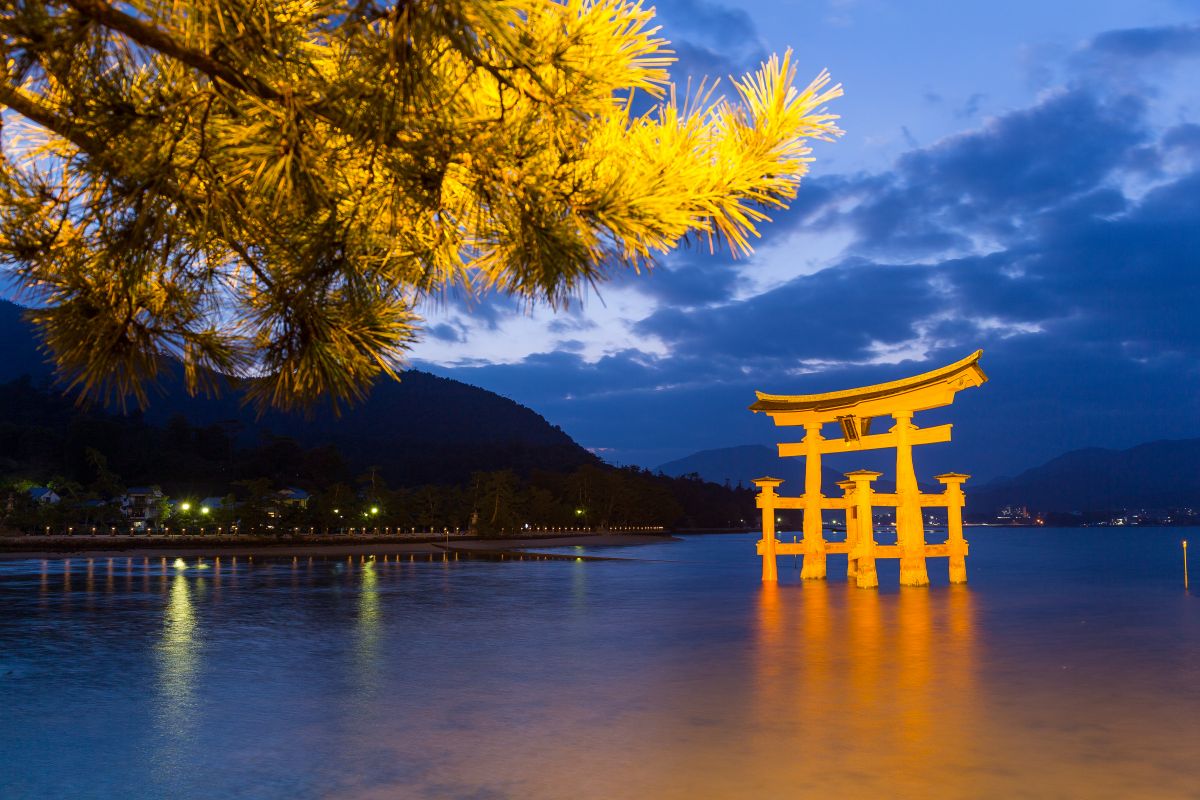
In this article, we explore the Shintoism, the religion’s belief system and its history.
Who Is The Founder Of Shintoism?
Unlike many other religions, Shintoism doesn’t have a founder. Shinto also doesn’t have any sacred scriptures, like the Bible, the Quran or the Sutras.
Shinto is Japans main religion. It is inspired by the life of the Japanese people and their traditions.
The belief of Shintoism is that there is no absolute right and wrong. No person is perfect, and that’s why Shinto also doesn’t claim one person as a founder.
Generally, Shinto is considered a very optimistic faith because people are believed to be fundamentally good. On the other hand, evil is only caused by evil spirits.
This means that the aim of many Shinto rituals is to ward off evil spirits by praying to their different gods, known as kami (see also ‘120 Shinto Gods, Goddesses, And Spirits‘).
Shinto Creation Beliefs
The foundations of Shinto beliefs and rituals is based on the creation myths of the different Japanese Islands.
Shinto folklore text talk about Izangi (heaven) and Izanami (earth) giving birth to the Japanese Islands together with different kami spirits.
The origin of the word Shinto comes from “the way of the kami”. Everything in Shintoism is about the different spirits.
All inanimate and animate things have their own kami spirit in Shinto belief.
They can represent different aspects of nature, such as parts of the landscape, weather phenomena, living beings and even the dead.
Where Do Shinto Followers Worship?
Shinto followers typically provide offerings at different places of worship that represent the homes of kami.
This could be various shrines but also special places in nature.
Shrines are popular places of Shinto workshop. They celebrate different festivals throughout the year to invite the kami to explore the outside world.
When you visit a Shinto shrine in Japan, you will notice a great variety of shrine architecture and art. Each shrine worships a different kami.
Who Are The Gods In Shinto?
In Shintoism, gods are called kami. However, they are not gods in the same sense as in Christianity, Judaism or Islam.
Kami are sacred spirits that aren’t omnipotent. They take specific forms of things in life, such as trees, mountains, the wind or rain.
However, they can also represent concepts or industries, such as fertility, a clean household or agriculture.
Shintoism believes that humans turn into kami when they die. They are then worshiped as ancestral kami by their living relatives.
The kami spirits of some famous people, such as popular scholars or poets, even receive their own shrines after their death.
Shinto Traditions
There is a large range of Shinto festivals held throughout the year. These rituals and festivities are a way for Shinto followers to give thanks to the kami.
Shinto Festivals
Known as matsuri, Shinto festival usually are organized by shrines, and they have three main parts.
The first part is “welcoming the kami” (kami mukae). Here, the different shrines invite their individual kami to come to earth for a special ceremony.
Then follows the “procession of the kami”. This is a festival parade where the personification of the shrine’s kami is carried through town.
In the final part of a Shinto festival, the kami are sent back to heaven where they reside until they are called again.
Japanese Weddings
The majority of weddings held in Japan follow the traditions of Shintoism. The couple makes their vows to the Shinto kami with a Shinto priest present.
One of the most important parts of a Japanese wedding happens at the end of the wedding ceremony. This is when the bride and groom drink from three different cups three times.
Only then, they are pronounced married.
Shinto Rituals
Depending on the shrine and its kami, there is a large variety of Shinto rituals.
One of the most popular rituals is a form of Baptism or Christening. That’s when Shinto families bring their baby to the shrine and express their thanks to the kami.
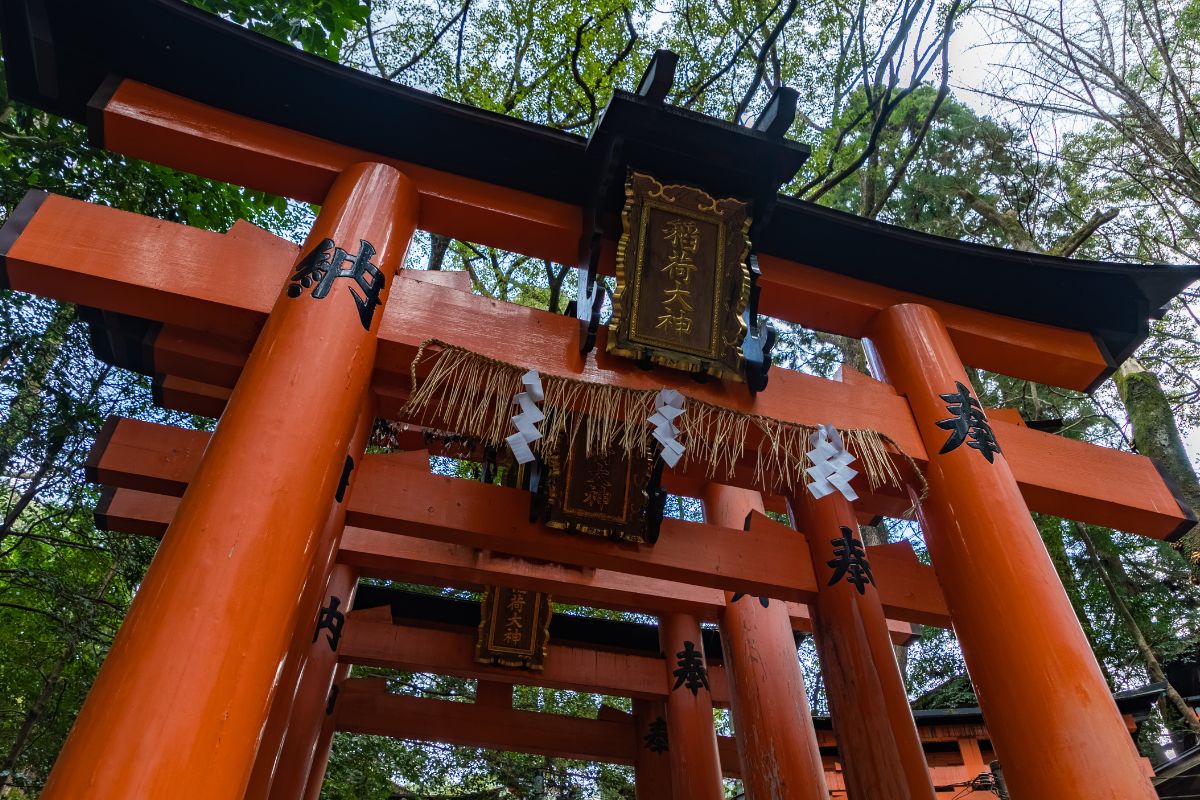
Are There Priests In Shintoism?
Priests in Shintoism are called Shinshoku. These Shinto priests look at all official shrine ceremonies.
However, modern-day Japan also have Shinto priests that are called kannushi. These
head priests observe purification rituals and they serve as a mediator between kami and worshipers.
The Work Of A Shinto Priest
Unlike in other world religions, Shinto priests aren’t expected to preach, lecture or work as spiritual leaders.
Instead, a shinshoku’s role is to nurture a good relationship between the Shinto worshipers and the kami spirits of the shrine.
This is done through different ways, including the evocation of the kami, providing offerings and meditation.
Shinto Priest Ranks
The highest Shinshoku is the chief priest known as guji.
This chief Shinto priest works together with an associate chief priest (gon-guji), senior priests (negi) and junior priests (gon-negi).
In order for a priest to qualify as a shinshoku, he must attend a priest school as a novice first. The school has to be approved by the Association of Shinto Shrines (Jinja Honcho).
In the past, this essential role was inherited and priesthood remained in the same families for many generations.
While this tradition has ceased to exist officially, some smaller shrines still choose to select their priests in this way.
It’s also interesting to note that also women could be admitted to priesthood under certain circumstances.
Life Of A Shinto Priest
Shinto priests live close to the shrine where they work. They are allowed to marry and have families.
As Shinto shrines only receive donations, the priests depend on offerings from worshipers and tourists.
The History Of Shintoism
During ancient times, Shinto was the only religion in Japan. When Buddhism was introduced to the various Japanese islands, some of the Shinto traditions had to change.
However, many people started to practice both Buddhism and Shintoism side by side. Shinto was so deeply ingrained in people’s values.
On the other hand, Buddhism provided greater structure, and it also offered rituals that simply didn’t exist in Shintoism, such as funerals.
Between 1868 and 1912, Shintoism because Japan’s state religion. The country made a big effort to clearly distinguish Shintoism from Buddhism.
Shortly after the second world ware, Shintoism was completely separated from Buddhism and it became more popular across the country.
At the same time, the power of the Emperor diminished and there was a greater focus on the wellbeing of the nation.
This helped to create a greater focus on Japan’s most important religions.
Final Thoughts
Shinto is the most important religion in Japan. While Shintoism doesn’t have a founder, it is based on a strong belief in nature and people.
Shinto followers join in some of the most important festivals at their local shrine each year. They can also provide offerings to the kami for special occasions.
If you travel to Japan to learn more about Shinto, then explore some of the famous shrines in Tokyo and Kyoto.
- How Much Money Can You Make Teaching English in Japan? - December 12, 2022
- The Best Places to Teach English in Japan - December 9, 2022
- The Best Credentials for Teaching English in Japan - December 8, 2022


